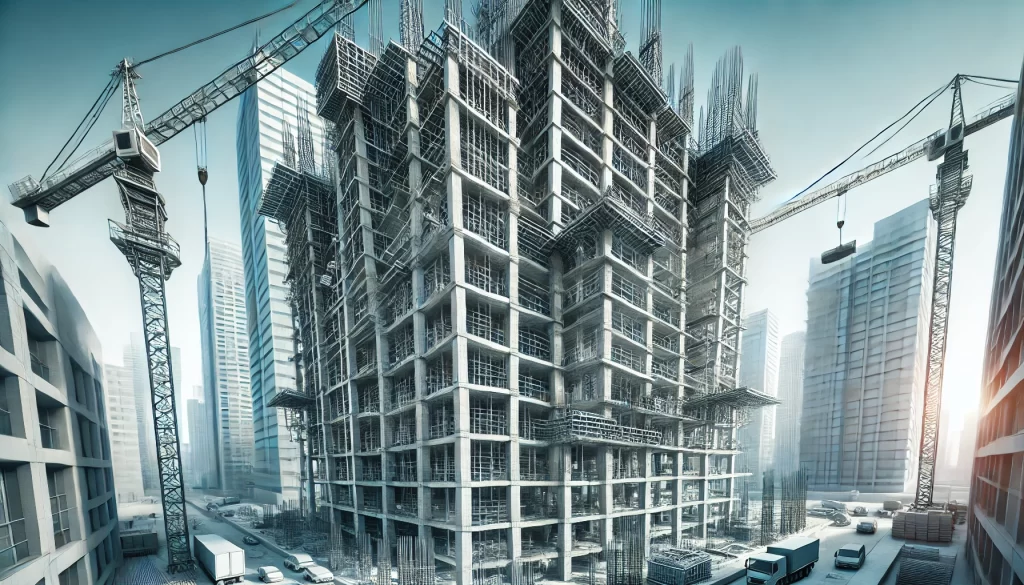The evolution of construction techniques has allowed engineers to dream higher and bigger, redefining city skylines worldwide. One technology that has become a game-changer, particularly for high-rise buildings, is post-tensioned concrete. As an innovative reinforcement technique, post-tensioning offers unique advantages that make it indispensable for high-rise structures. Here, we’ll explore the top five reasons why post-tensioned concrete is so valuable in high-rise construction.
1. Reduced Concrete Volume and Lighter Slabs
One of the most remarkable benefits of post-tensioning is its ability to significantly reduce the volume of concrete required for construction. In a high-rise building, traditional reinforced concrete slabs are often thicker to handle the load-bearing requirements, which adds to the overall weight and cost. With post-tensioning, however, slabs can be designed thinner and lighter, as the high-tensile strength of post-tensioned cables compensates for the concrete’s load-bearing needs. This reduction in material usage directly translates into cost savings and reduced environmental impact, as it reduces the carbon footprint associated with concrete production.
2. Longer Spans with Fewer Support Columns
High-rise buildings often require open and flexible floor plans to accommodate various layouts and maximize usable space. Post-tensioning enables this by allowing for longer spans between columns. With post-tensioned concrete, support columns can be spaced farther apart, which means fewer obstructions in floor layouts, enabling more flexible design options for architects and interior designers. Additionally, this benefit creates more attractive spaces with unobstructed views, which is a significant advantage in the commercial real estate market.
3. Enhanced Structural Durability and Resistance
Post-tensioned concrete offers greater resistance to cracking and other structural issues compared to traditional concrete reinforcement. The tensioned cables create a compression force within the slab, which helps prevent cracking under load and mitigates shrinkage issues over time. This enhanced durability is especially beneficial for high-rise buildings, where structural integrity is crucial for long-term safety. Furthermore, post-tensioned concrete’s resistance to deflection (sagging or bending) means floors remain stable even under heavy use, making it ideal for buildings with high traffic or load demands.
4. Greater Seismic Performance
High-rise buildings are particularly vulnerable to seismic activity, as the forces generated by earthquakes can amplify with the height of the structure. Post-tensioning, however, has proven to be highly effective in improving a building’s resilience to seismic forces. The inherent flexibility of post-tensioned concrete allows it to better absorb and distribute seismic energy, reducing the risk of catastrophic failure. Additionally, because post-tensioned concrete can flex and move without compromising the structural integrity of the building, it provides engineers with a valuable tool for designing earthquake-resistant high-rises.
5. Reduced Construction Time and Cost Efficiency
In high-rise projects, time and budget constraints are often paramount. Post-tensioning can help reduce both construction time and costs. By allowing thinner slabs and longer spans, fewer materials are needed, and structural elements can be constructed more quickly. The streamlined process of installing post-tensioned tendons is less labor-intensive and requires fewer materials overall, translating into faster project timelines. This reduction in time and resources ultimately allows developers to bring high-rise projects to market faster, maximizing investment returns.
Conclusion
As cities around the world continue to grow vertically, the demand for efficient, resilient, and economical construction methods is at an all-time high. Post-tensioned concrete has emerged as a solution to many of the challenges posed by high-rise construction, offering a combination of flexibility, strength, and cost-effectiveness. By reducing material use, enhancing structural performance, and enabling design versatility, post-tensioning is setting new standards for how high-rises are built today and into the future.

